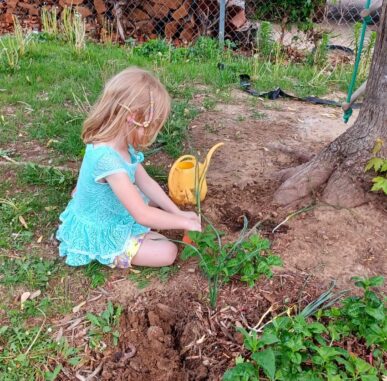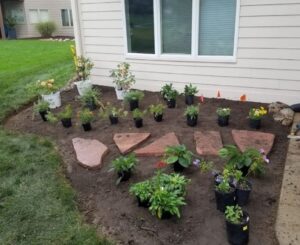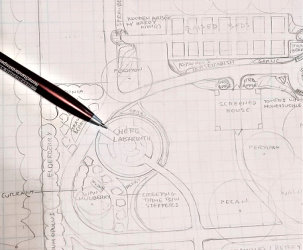
A really common question we get at the nursery is “When can I plant?”
Of course, selecting a location for your plants that matches their environmental needs is of utmost importance, but knowing when to plant and what to expect can go a long way towards bolstering your confidence when it comes to caring for your landscape.
The key to remember about planting in your landscape is that you want to make the transition into the ground as easy as possible for your plants. Being transplanted can be stressful, but there are ways we can minimize this stress to give our new plants their best chance at success in the landscape.
For Nebraska gardens, early/mid spring is a great time to plant–once the ground has thawed and the plants are beginning to wake up. The cooler temperatures and reduced foliage means the plants will lose less water to the air through transpiration. Spring is also the time when most plants are naturally programmed to put on the most growth, and for a new transplant, this means strong root development right away, so the plant will be less vulnerable to drying out by the warmer/drier months of summer. Spring in Omaha is typically cooler and damp–perfect conditions for newly installed plants to recover. After all “April showers bring May flowers”, right? It is still important to make sure that the new plantings are getting watered regularly if April’s showers aren’t cooperating.

Summer plantings can be very successful as long as they are properly watered and mulched
Autumn can also be a good time to plant, as cool and damp weather returns. By the fall, most plants have already begun preparing for winter dormancy, and so we shouldn’t expect much in the way of growth until the following season. Since they are beginning to go into dormancy, fall transplants won’t be too demanding about supplemental water after they are planted, and they will be ready to start growing as soon as the ground begins to thaw in the spring. However, there are definitely some plants that don’t do well with fall planting– grasses and roses are noteworthy exceptions here, and are most successful when they are planted by August. Butterfly bush and althea can also be a bit finicky about late season planting. Aside from these few exceptions, many plants will do very well the following season if they are planted in the fall. If the winter following your fall planting is very dry, those new plantings may need a bit of supplemental water during the colder months to get them through until spring.
Summer plantings can also be very successful if a couple of extra precautions are taken.
- Water! Water! Water! Water every day for at least two weeks, and then a few times a week through the summer. This is SOO important in the hot dry months.
- Mulch around new plantings to help retain soil moisture.
- Ideally, wait until a plant is done blooming to transplant it.
- If you are digging up and moving a plant from one place to another, it is best to clip off a good portion of the foliage to reduce water loss through the leaves. This can also be done with potted plants if they seem particularly stressed.
- Plants installed later in the summer may not put on much visible growth until the following season, and may even go dormant–but will then emerge with vigor the following spring–so be patient, and don’t worry too much!
Taking charge of your own planting for the first time can be intimidating, but also very rewarding. Remember that plants are resilient and can usually bounce back from some stress. Every location is different (even within your own yard) and each plant has different needs , so it is important to pay attention to what your plants are telling you: if the leaves are wilting, think about your watering routine. Feel the soil around the plant–if it is soggy, reduce watering. If it is bone dry, water for a longer period of time. Don’t be afraid to ask for help! Feel free to call or stop into the garden shop with any questions about planting specific plants in your yard.








